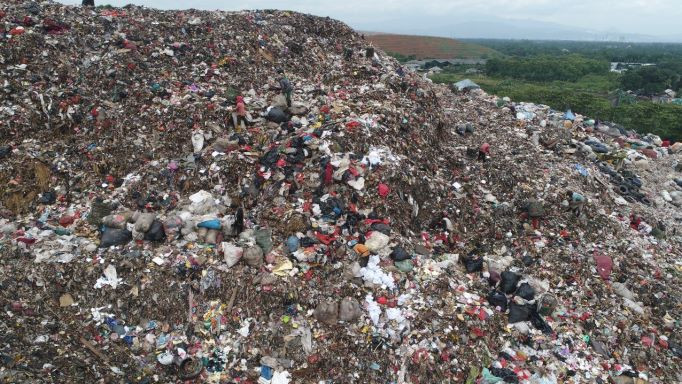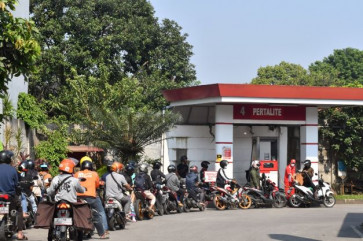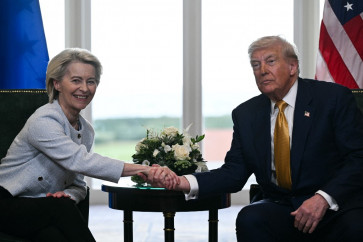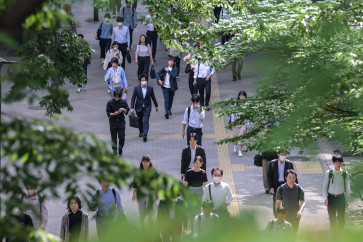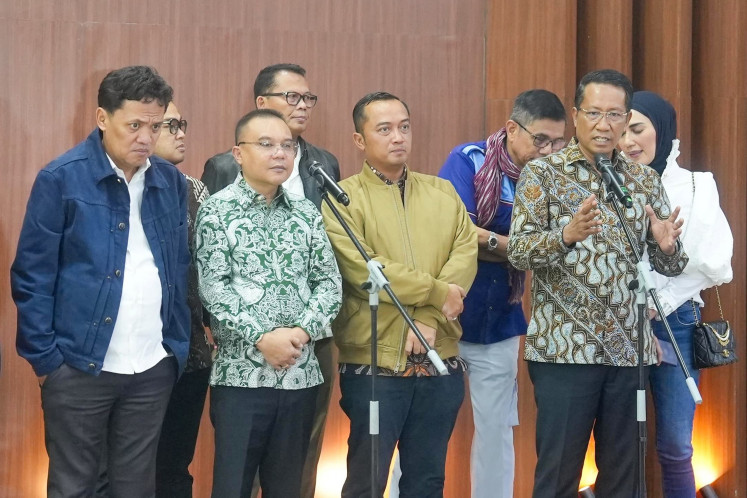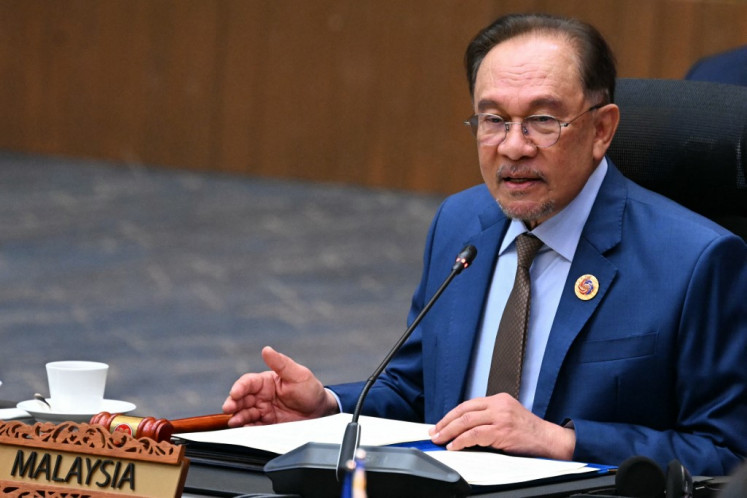Popular Reads
Top Results
Can't find what you're looking for?
View all search resultsPopular Reads
Top Results
Can't find what you're looking for?
View all search resultsInnovative solution to the perennial waste problem
Solving Jakarta’s waste problem will require the identification of new technology partners and funding sources, as well as a legal and political climate that is conducive to international investments.
Change text size
Gift Premium Articles
to Anyone
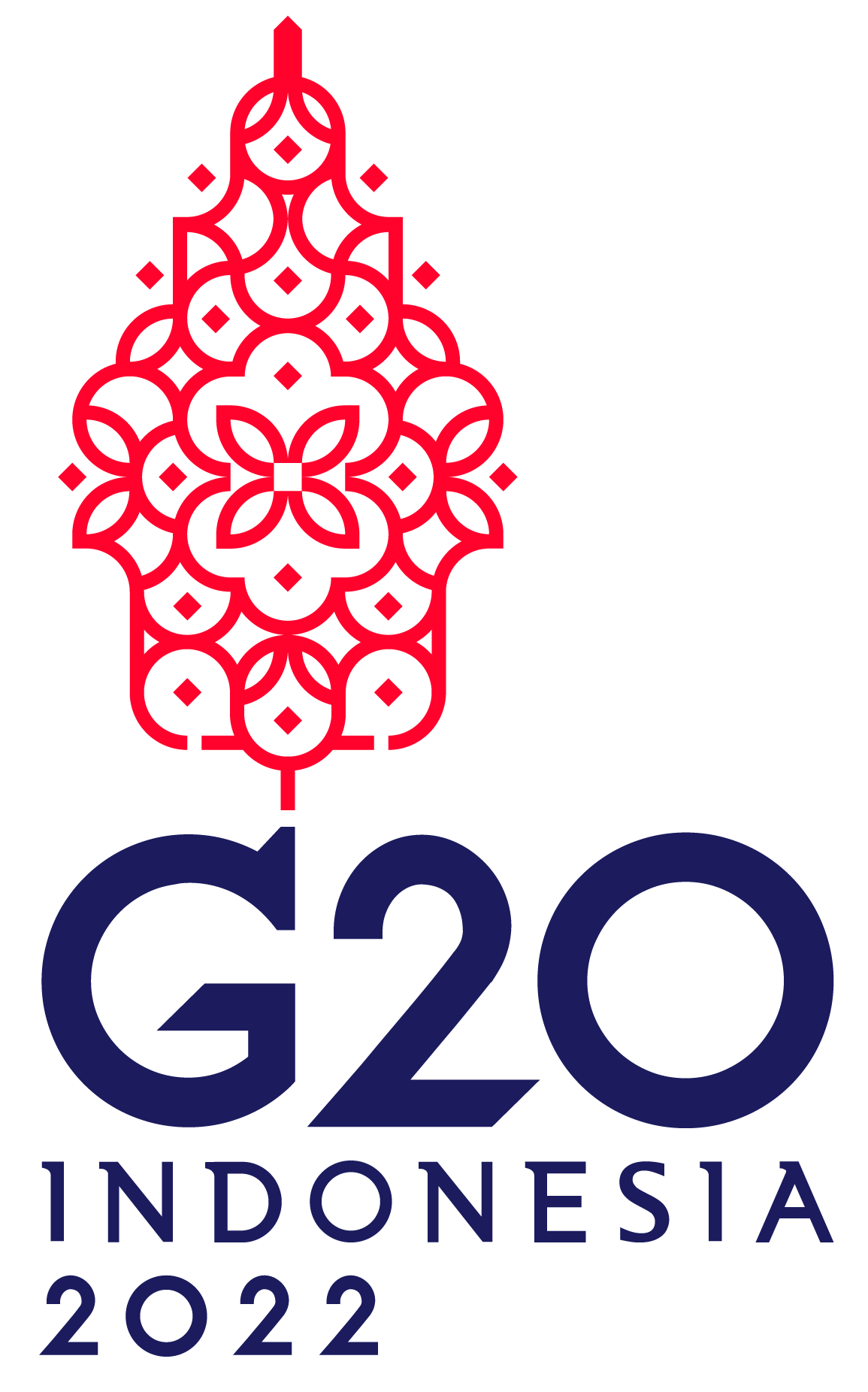
Indonesia’s 270 million citizens increasingly flock to urban centers in search of opportunities to improve their welfare, creating massive challenges in the field of public waste and energy management.
The myriad environmental problems are still haunting the country now that it holds the presidency of the Group of 20 and will host its summit in Bali in November.
Indonesia, for example, continues to be one of the world’s largest producers of plastic waste. Jakarta alone generates over 7,000 tons of waste per day, and landfills like Bantar Gebang, West Java, are close to capacity. Over 20,000 pemulung (scavengers) toil at the lower end of the waste management industry, highlighting the dire need for innovative solutions.
Against this backdrop, policymakers are increasingly committed to finding new ways to attenuate the waste crisis. Promising efforts are underway. Jakarta’s Investment Center currently oversees 14 projects aiming at taking waste management solutions to the next level. Key efforts include the construction of waste-to-energy plants, such as immediate treatment facilities (ITF) and the reduction of maritime plastic around Thousand Islands regency.
In 2018, Jakarta Governor Anies Baswedan launched the ITF Sunter project, emphasizing that advanced technological solutions are in the interest of future generations. Sadly, this project came to an abrupt halt when a Finnish technology firm and international financing partners withdrew because of a perceived lack of political guarantees.
Solving Jakarta’s waste problem will require the identification of new technology partners and funding sources, as well as a legal and political climate that is conducive to international investments and public-private partnerships (PPP). For instance, environmental laws will need to set rules and incentives that resonate with international standards and foster technology investments.
The central objective is to attract technological solutions that process large amounts of waste, without generating social and environmental costs for surrounding neighborhoods. Negative externalities – toxic haze, contaminated water or incessant noise – are ideally contained to a minimum. The challenge is further compounded by budget considerations.
While refuse-derived fuel (RDF) may constitute a novel technological approach in many parts of Southeast Asia, it is continuously gaining prominence in the region. ASEAN member states such as Thailand and Vietnam are currently investing in RDF technology. For Indonesia, RDF could initiate a leapfrogging momentum by allowing local communities to transform waste and landfills into energy and new communal space.
For this technological transformation to succeed, it is essential that energy and environmental policymaking is well aligned. Such an alignment will also need to take different economic, social, and technological challenges into account.
It will be paramount to support these technological innovations with a facilitative regulatory framework that secures seamless RDF production, sales and utilization – as well as support them with additional incentive schemes (subsidies, tax breaks, infrastructural support) that foster investment activities.
It is also imperative that policies are socially inclusive and support the livelihood of local pemulung. This can be done by assuring local job opportunities in upper-stream recycling or other sectors. Thus, successful implementation calls for a prudent mix of financial incentives, environmental/technical regulations and quality control measures.
To facilitate this process, the Jakarta government has devised a plan to dispatch Indonesian experts to study environmental law with leading experts in Europe, including me.
Germany is one of the countries with a success story in combating waste. Germany’s recent history of environmental transformation has not been without its share of mistakes and failures. Indonesia is hoping to shorten this learning curve by steering its environmental transformation in prudent and well-coordinated ways.
More efficient, greener and affordable technology solutions such as maximum yield technology (MYT) can be a valuable ingredient on Indonesia’s pathway toward sustainable and inclusive development. Innovative waste management – combined with sound institutional and legal support – has the potential to foster sustainable development and economic inclusion. This includes new employment and education opportunities for low-income community members, such as local pemulung.
Through a combination of international academic cooperation, public-private partnerships and effective governance, the Bantar Gebang landfill and other dump sites could become a national showcase. Similar to the transformed landfills in Tübingen and Kahlenberg in Germany, Jakarta could generate new stretches of prime real estate by 2050, where families want to live and local businesses thrive.
Tubingen was a former landfill. In the 1930s, a river was diverted and filled up with garbage, only to be covered with concrete in the 1960s and used as a concrete plant until its closure in the 1990s. Over half a century of being a landfill, the toxicity is now gone. Currently, the area is being turned into a new city quarter, with private homes, playgrounds a kindergarten, as well as small businesses in a demonstration office building built with wood and steel rather than concrete.
While Kahlenberg is a local community near the university town Freiburg. It is an example of an industrial compound that has shed its past and turned green: Its hill was a historical iron ore mine before it was converted into a landfill area in the 1970s. When its further use as a landfill became legally impossible in 2005, the community waste management association (KAZ) faced a profound challenge: How could Kahlenberg process large amounts of waste and at the same time convince community members that a large-scale incineration plant would bear little risks for their local livelihood?
Surely waste-to-energy solutions are not the ultimate answer to global waste issues. The key challenge lies in the development of circular economies that reduce resource extraction, plastic waste and harmful emissions. At this point, however, Indonesia deserves access to high-quality technologies that attenuate emerging waste problems.
RDF-focused solutions like Maximum Yield Technology constitute a promising step in this direction.
***
The writer is a senior legislative drafter and advisor to the Jakarta Investment Center and One Stop Integrated Service Agency. She currently is pursuing a PhD in environmental law in Australia.

